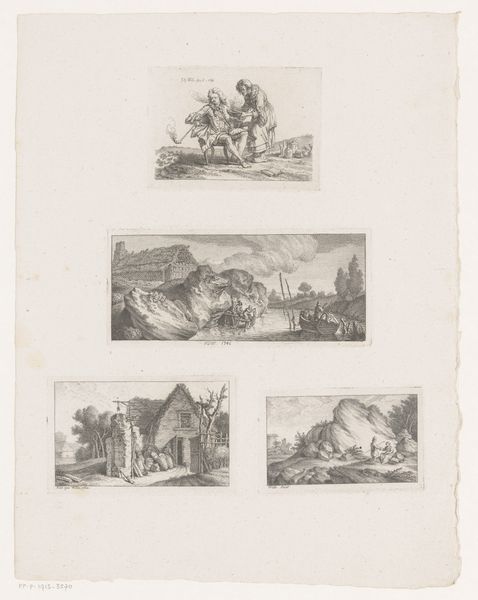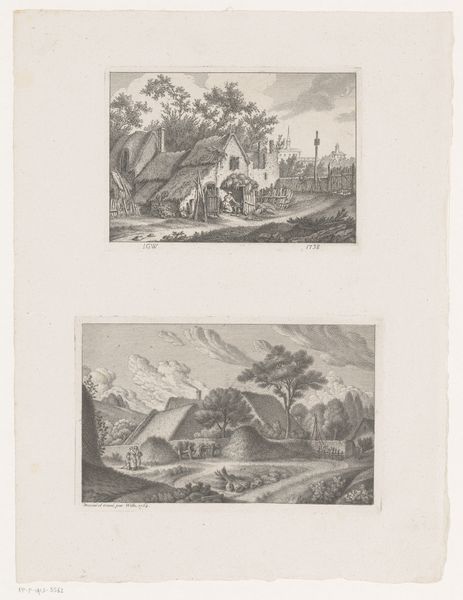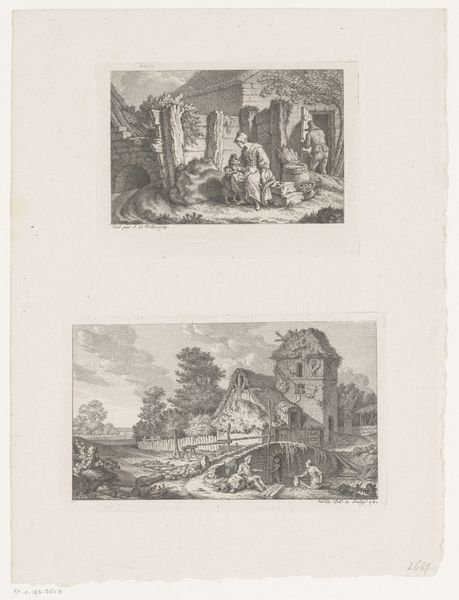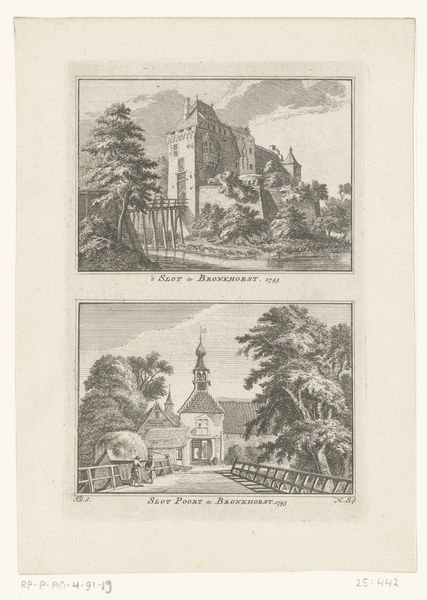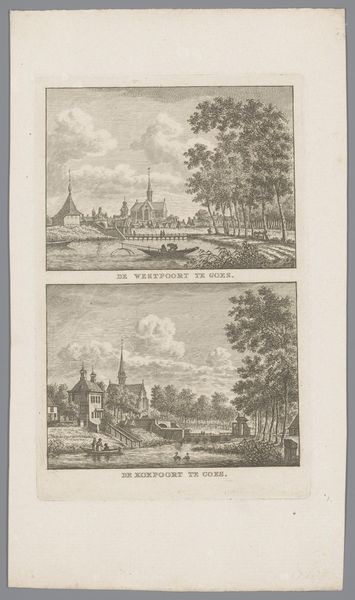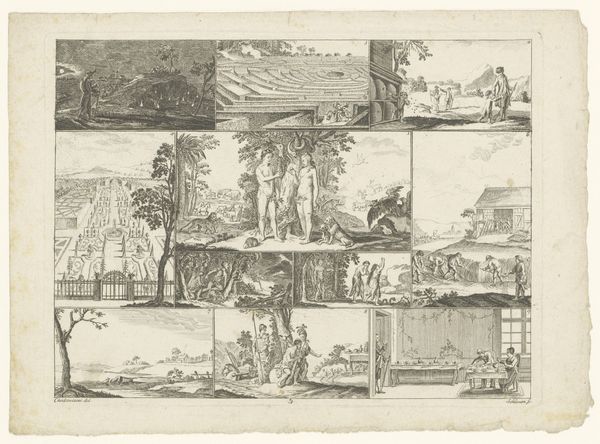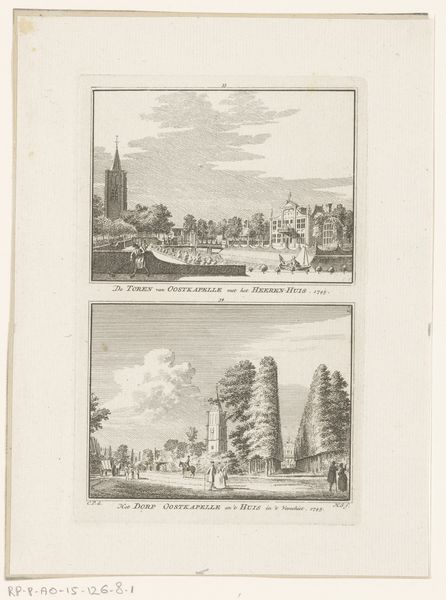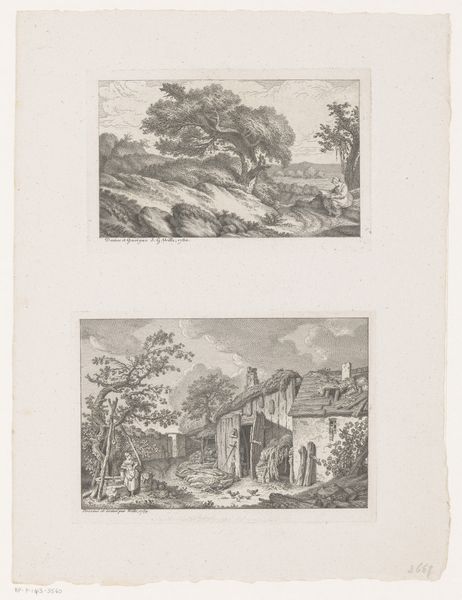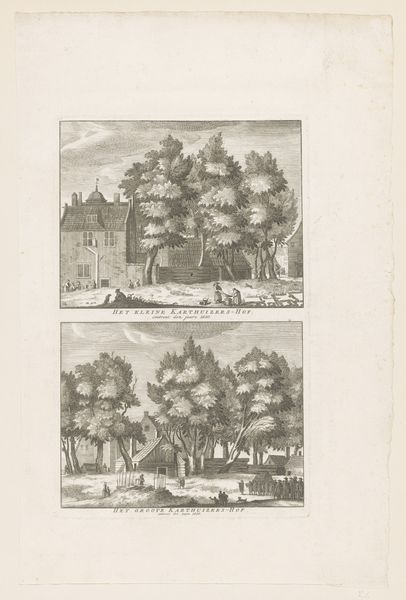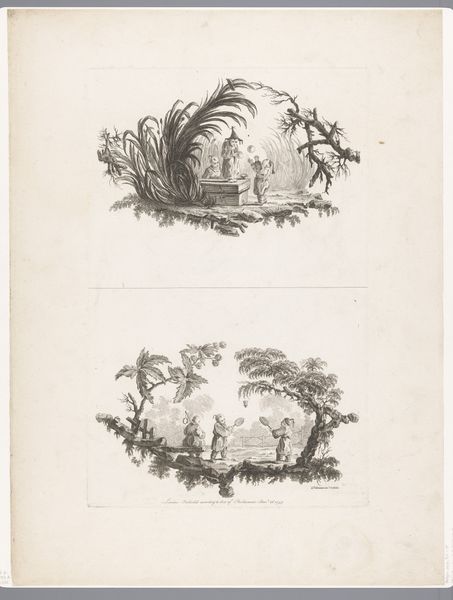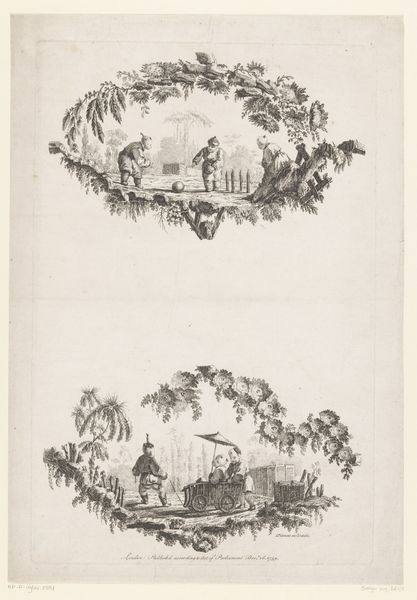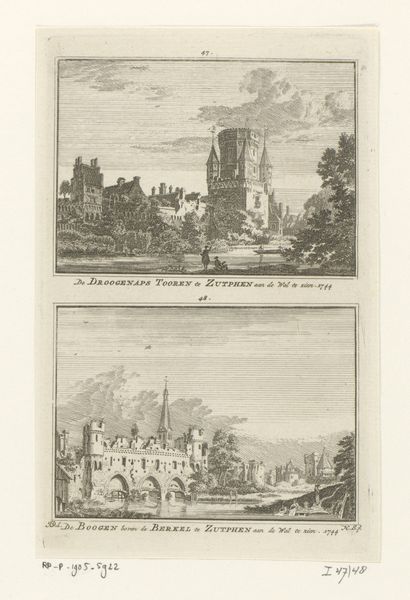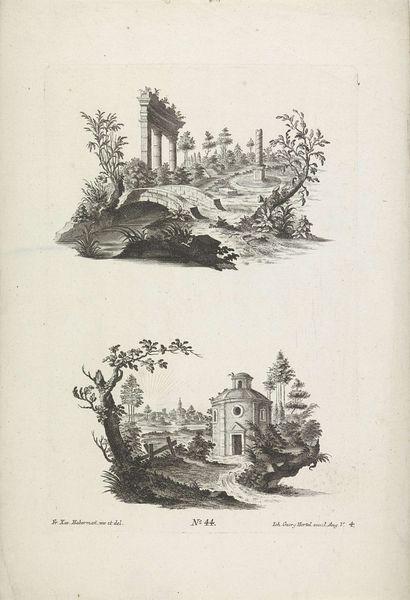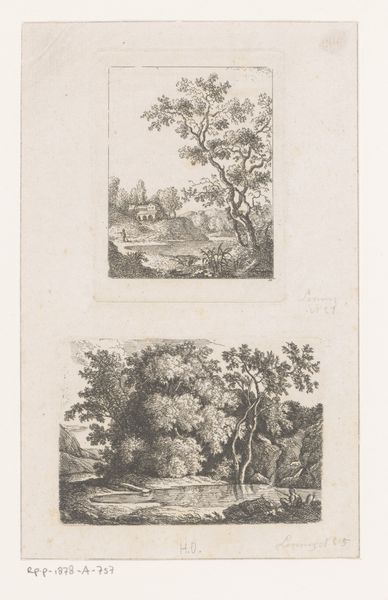
drawing, print, paper, engraving
#
drawing
# print
#
landscape
#
paper
#
romanticism
#
engraving
Dimensions: height 434 mm, width 294 mm
Copyright: Rijks Museum: Open Domain
Curator: This print from around 1830 is entitled "Six Views in the Old Bishopric of Basel." It's an engraving, done on paper, featuring six distinct landscape vignettes. A Mr. Kaeppelin is credited. Editor: Immediately, I notice a nostalgic longing permeating these little scenes. The scale seems compressed, focusing on intimate rural details rather than grand, sweeping vistas. It feels handmade, in a way digital images rarely achieve. Curator: The appeal definitely resides in that tangible human element, but consider how the print itself operates within a system of production and consumption. As a relatively inexpensive reproduction, it allows a broader audience to experience picturesque locales they might otherwise never encounter. Editor: True. And these landscapes are so carefully selected, each containing architectural or natural elements laden with symbolic meaning. The quaint watermill, for instance; the towering rock formations suggestive of both refuge and the sublime. Curator: The very act of compiling six different scenes into one print hints at a particular kind of geographic survey being conducted at this time, in which regions and landmarks were surveyed. Look closely; do you detect different treatments of the surface depending on if the engraving depicts vegetation versus built elements? Editor: Absolutely, I see how the engraver uses tighter, more controlled lines to depict the castle’s sharp angles compared to the more flowing marks for the surrounding trees and foliage. It's a fascinating play between the organic and the artificial. And I feel that the inclusion of tiny figures in most of the scenes serves as an essential bridge between humanity and nature, reminding us of our enduring connection to place. Curator: These images really do tap into Romantic ideals regarding the intersection of place and human presence. Did the modes and economics of print production at the time amplify or challenge those notions of Romanticism? Editor: That's certainly something to consider more closely. Thank you. Looking at this print again through the lens of industrial production is interesting to me now. Curator: Indeed, and I hadn't quite registered the romantic themes at play until we examined it together through the imagery and visual languages used here.
Comments
No comments
Be the first to comment and join the conversation on the ultimate creative platform.
